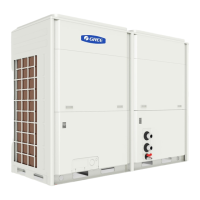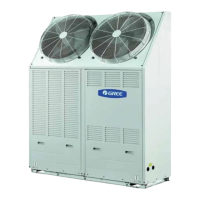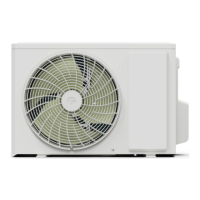87
Test Operation, Troubleshooting and Maintenance
Replacement of the compressor
Note: be sure there is no refrigerant inside the system and power supply has been cut off before
replacement.
Steps Image Instructions
5. Replace the
compressor with
a new one.
• During replacement, care must be
taken to not damage rubber pads.
• Seal the replaced compressor to
prevent moisture entering.
• Place a new compressor at the
rubber pads. Steel bushing is
required for rubber pads.
• Tighten the steel bushing with
screws.
6. Reconnect
the suction line,
the discharge
line, other pipes
and electric
lines. Then,
check for normal
operation of the
compressor.
• Reconnect and resolder the suction
and discharge lines. Do charge
nitrogen during soldering.
• After soldering, charge high-
pressure nitrogen for the leak test.
• Power on the unit and start it
through a AC contact for 2~3
seconds.
• When the compressor runs
reversely, it would generate harsh
noise.
7. Put back the
front panels.
Put back front panels and tighten
screws.
Note: there would be trapped oil inside the compressor during replacement, which would not affect its
reliability but increase resistance to the rotors and then consume more power. In order to expel it, it would
be better to install another valve at the lower point of the suction line. After that, run the compressor for
ten minutes and then open this valve until no oil comes out. Repeat this operation twice for a normal oil
level.

